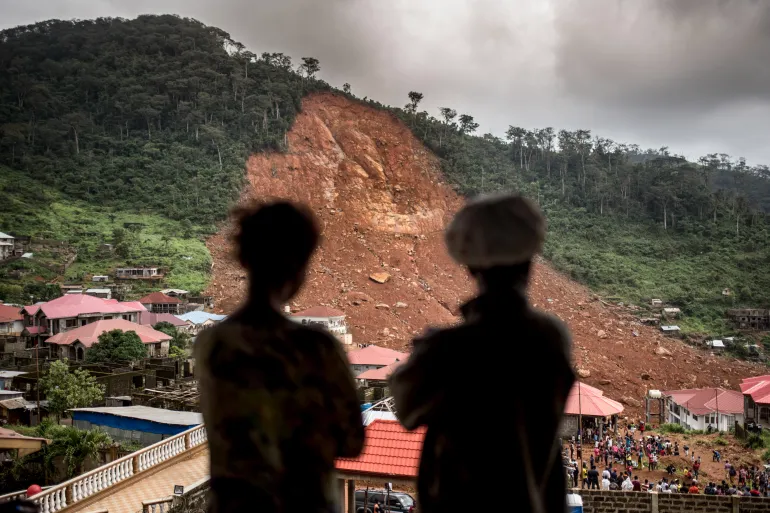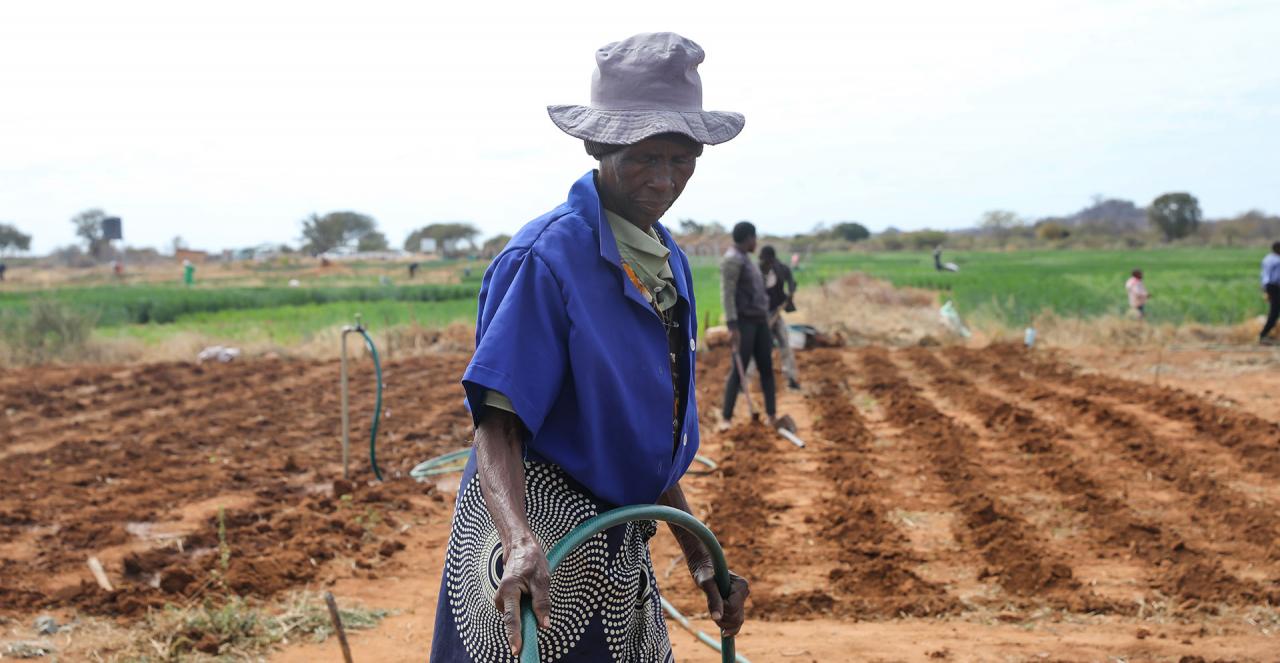Written By: Faith Jemosop
Sierra Leone is facing a climate emergency that threatens to undo decades of development progress. With average temperatures rising, rainfall patterns shifting, and sea levels climbing, the country is enduring extreme weather events, deadly floods, food insecurity, and public health disasters. Yet Sierra Leone contributes less than 0.03% of global carbon emissions.
According to the Notre Dame Global Adaptation Index, Sierra Leone ranks among the most climate-vulnerable countries globally, not because of its emissions, but due to its low adaptive capacity and high exposure to climate hazards. From flash floods in Freetown to declining agricultural yields in rural provinces, climate change is no longer a future threat, it’s a deadly, present-day reality.
Floods, Landslides, and Rising Sea Levels Are Wreaking Havoc
Every rainy season in Sierra Leone has now become a period of fear and anticipation. The country’s capital, Freetown, built on steep hills and along the Atlantic coast, is especially vulnerable. In August 2017, over 1,100 lives were lost when a massive landslide crushed communities on Sugar Loaf Mountain following intense rainfall, an event widely attributed to climate-induced soil saturation, deforestation, and urban sprawl.
In the low-lying coastal areas, rising sea levels estimated at 2.8 mm per year are eroding land, submerging homes, and contaminating freshwater reserves. Communities in Aberdeen, Lumley, and Goderich are retreating inland, while livelihoods linked to fishing and tourism are being wiped out. Urban flooding is now an annual event, with the National Disaster Management Agency warning that over 60% of Freetown’s residents live in flood-prone informal settlements.
Agriculture and Food Security in Crisis
Climate change is crippling Sierra Leone’s predominantly rain-fed agricultural sector. The country’s economy depends heavily on agriculture, which provides jobs for about 60% of the population and contributes nearly 58% to its GDP. But the sector is now at the mercy of climate volatility.
Unpredictable rainfall disrupts planting seasons. Prolonged dry spells cause crops to wither, while heavy rains destroy entire harvests. Pests and plant diseases thrive in the warmer climate. According to the Food and Agriculture Organization (FAO), over 4.4 million people more than half the population are facing moderate to severe food insecurity.
Public Health Under Pressure
The climate crisis is also triggering a public health emergency. Rising temperatures and stagnant floodwaters have become breeding grounds for malaria, dengue fever, and cholera outbreaks. In Freetown, poor sanitation systems combined with frequent floods have increased the spread of waterborne diseases.
During the dry season, water scarcity becomes a problem, especially in rural areas. Women and children often travel long distances to fetch clean water. As climate stressors increase, so too does the malnutrition rate, particularly among children under five, further compromising national health outcomes.
Forests Disappearing at Alarming Rates
Deforestation is accelerating Sierra Leone’s vulnerability. The country lost over 2.17 million hectares of tree cover between 2001 and 2024, according to Global Forest Watch. Illegal logging, unsustainable farming, and charcoal production are primary drivers.
This massive loss of forest cover not only degrades biodiversity but also weakens natural barriers against floods and landslides. Wildlife species such as the Western Chimpanzee, once widespread in Sierra Leone’s forests, are now endangered due to habitat destruction.
Urbanization and Unequal Impact
The rapid and largely unplanned urban expansion of Freetown has deepened the climate crisis. An estimated 1.2 million people now live in the capital, many in overcrowded, poorly built settlements without drainage systems or emergency services. These neighbourhoods are often located along riverbanks and steep slopes, increasing the risk of disasters.
Women and girls are disproportionately affected. In rural areas, they bear the burden of declining agricultural productivity and water shortages. In cities, they face increased health risks, displacement, and limited access to climate-resilient resources.
Government Response and Climate Policy
Sierra Leone has developed a number of policy frameworks to respond to the crisis:
- The Nationally Determined Contributions (NDCs) commit to a 5% unconditional and 10% conditional reduction in emissions by 2030, focusing on sustainable forestry, renewable energy, and resilient agriculture.
- The National Adaptation Programme of Action (NAPA) prioritizes water resource management, reforestation, early warning systems, and coastal protection.
- The Freetown TreeTown Initiative, launched in 2020, set a goal of planting 1 million trees by 2023 to address urban heat, landslides, and biodiversity loss. It reached over 550,000 trees by early 2023.
Also read: How Agricultural Investment Transforms Drought-Prone Rural Zimbabwe
Despite these efforts, implementation remains hindered by limited funding, weak infrastructure, and inadequate public awareness.
International Aid and Climate Financing
Sierra Leone has been able to access limited climate financing through:
- The Green Climate Fund (GCF): Supports initiatives like climate-smart agriculture and community resilience programs.
- The World Bank and UNDP: Back urban resilience projects and improved disaster management tools.
- The West Africa Coastal Areas Management Program (WACA): A regional initiative that includes Sierra Leone and supports coastal erosion mitigation.
Still, climate finance remains a fraction of what the country needs. According to the NDC roadmap, Sierra Leone requires $2.2 billion in climate investments by 2030, but has received less than 15% of this amount.
What Needs to Be Done?
To reduce vulnerability and build resilience, Sierra Leone must:
- Strengthen Early Warning Systems: Real-time weather and disaster alerts can save lives. Upgrade Urban Infrastructure: Improved drainage and zoning regulations can mitigate flood risks in Freetown.
- Scale Up Climate-Smart Agriculture: Invest in irrigation, drought-tolerant seeds, and farming education.
- Protect and Restore Forests: Enforce bans on illegal logging and promote reforestation through community incentives.
- Integrate Gender into Climate Strategy: Ensure women have access to land, finance, and leadership in climate decision-making.
- Expand Climate Education: Equip communities with knowledge to adapt and respond effectively.






